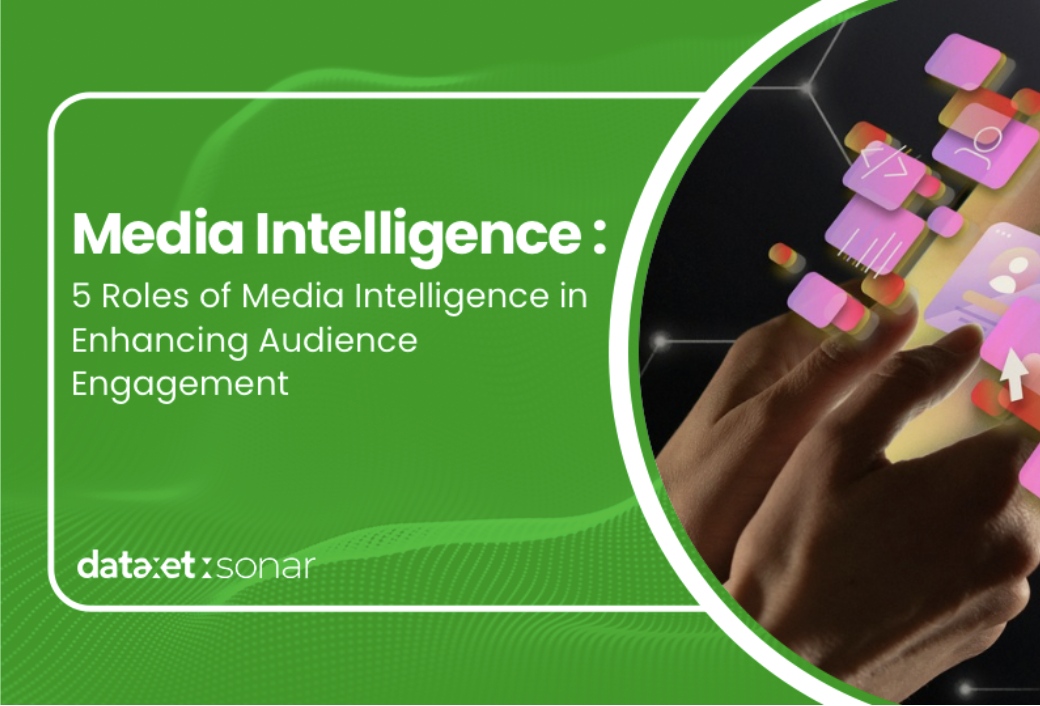In today’s increasingly digital world, the ability to understand and effectively interact with audiences is a key factor in a company’s success. One way to boost this interaction is by using media intelligence. Media intelligence involves collecting and analyzing data from various media sources to gain valuable insights into audience behavior and market trends. This article will discuss five main roles of media intelligence in increasing engagement with audiences, and how it can provide a competitive advantage for companies in an ever more competitive marketing landscape
Memahami Perilaku Audiens Secara Mendalam
1. Deep Understanding of Audience Behavior
One critical aspect of an effective marketing strategy is a deep understanding of the audience. By knowing who your audience is, what they want, and how they behave, you can develop more targeted communication strategies. This is where media intelligence plays an important role. Through data analysis from various platforms like social media, news, blogs, and forums, companies can identify audience behavior.
For example, by tracking audience interactions on social media, companies can identify the types of content that are most shared or discussed. Media intelligence also helps understand audience sentiment—whether they feel positively or negatively about a topic or brand. All this information allows companies to tailor their messaging more accurately to audience preferences.
2. Enhancing Customer Experience through Personalization
Customer experience is essential in building a strong relationship between a brand and its audience. One way to enhance this experience is through personalization. Personalization can include many aspects, from customized emails and product recommendations to content that aligns with audience interests. Media intelligence enables companies to understand audience preferences based on the data collected from their interactions across platforms.
With the right information, companies can create a more personal and relevant experience. For example, if the data shows that audiences are interested in a specific topic, the company can create more content focused on that subject. This not only boosts engagement but also strengthens customer loyalty.
3. Creating More Effective Content Strategies
One of the main drivers of engagement is producing content that is engaging and relevant. However, to create content that truly resonates with the audience, companies must understand what the audience is looking for and what they need. Media intelligence offers valuable insights into the types of content most searched for and shared by audiences.
Data from media intelligence can reveal trending topics, frequently searched keywords, and preferred content formats (e.g., articles, videos, infographics). Understanding these trends helps companies create more focused and compelling content, which in turn increases engagement.
For instance, if a company discovers that its audience is highly interested in environmental issues, it can create content around that topic. Such timely and relevant content is more likely to capture attention and encourage interaction.
4. Boosting Engagement on Social Media
Social media has become one of the most effective channels for interacting with audiences. However, to maximize engagement on these platforms, companies must monitor ongoing conversations and participate in relevant discussions. Media intelligence enables companies to monitor social media conversations and respond in real time.
By tracking audience sentiment regarding a brand or specific topic, companies can take proactive steps to enhance engagement. For example, if there are complaints about a product, the company can promptly offer a solution or explanation. Conversely, if there is positive discussion, the company can participate by expressing appreciation or responding to audience comments.
Media intelligence also allows companies to identify influencers or key figures on social media who can help boost brand awareness. Collaborating with influencers who have relevant audiences can help companies expand their reach and further increase engagement.
5. Identifying Emerging Trends
One of the greatest advantages of media intelligence is its ability to detect emerging trends. These trends can include popular topics among audiences or shifts in consumer behavior. By identifying trends early, companies can adjust their strategies to stay relevant and capture audience attention.
For example, if media intelligence shows growing interest in sustainability or eco-friendly products, a company can respond by creating products or campaigns that align with those values. Keeping up with emerging trends also shows that a company is up-to-date and attentive to issues that matter to its audience.
Recognizing trends early also allows companies to produce content that aligns with current audience interests, ultimately increasing engagement.
Conclusion
In an information-rich digital environment, media intelligence provides a significant competitive advantage for companies seeking to increase audience engagement. By leveraging data and insights from various media sources, companies can understand audience behavior, enhance customer experience through personalization, create more effective content strategies, and boost engagement on social media.
Additionally, media intelligence helps companies stay relevant by identifying emerging trends and adapting to changing audience preferences. All these aspects contribute to building stronger relationships between companies and their audiences, ultimately enhancing marketing outcomes and brand loyalty.
With an abundance of data available, companies that optimize the use of media intelligence will have a competitive edge in capturing audience attention and building deeper connections. Therefore, media intelligence is not just a tool—it is a necessity for companies striving to survive and grow in this competitive market.






